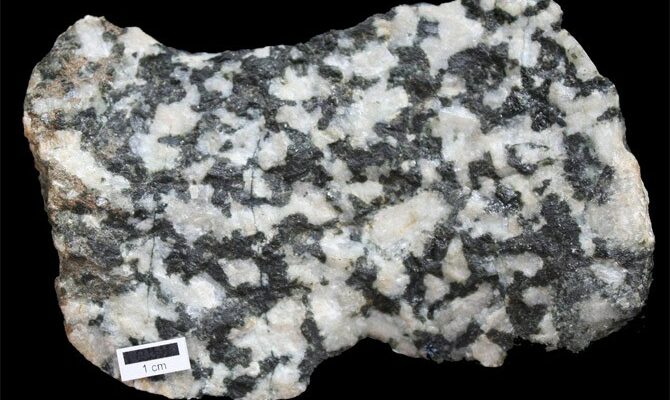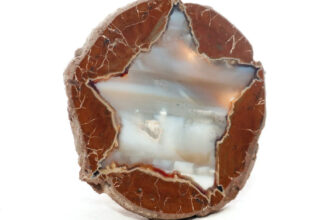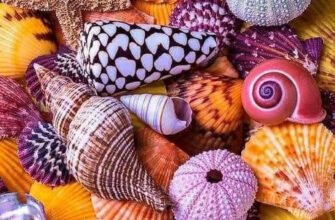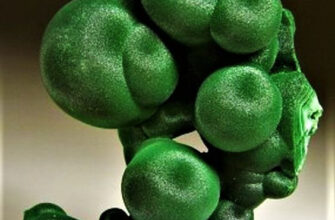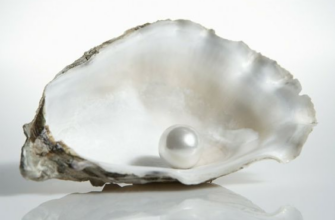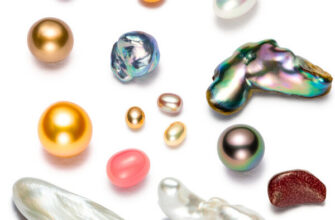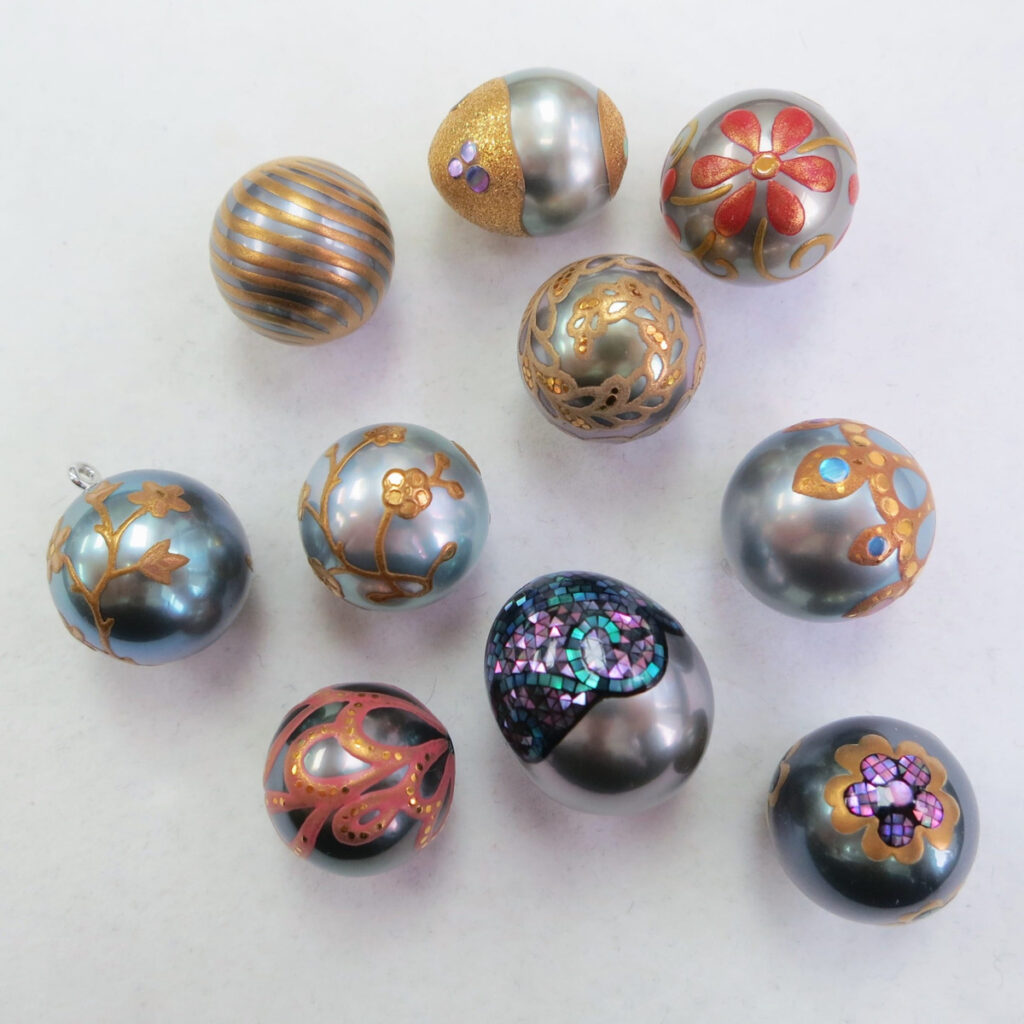Diorite is an igneous plutonic rock of medium composition, normal alkalinity series. In ancient times, for example, in ancient Egypt, it was used to process granite. But despite its hardness, it is perfectly polished and all the products that were made from it had strength and durability. It was also used to print letters on it.
History and origin
Diorite is very similar to granite in origin and mineral composition. It is formed at the junction of plates, in the place where the oceanic plate changes places with the continental one. With the partial collapse of the oceanic plate, basalt magma is formed, rising, it penetrates into the granitic rocks of the continental plate.
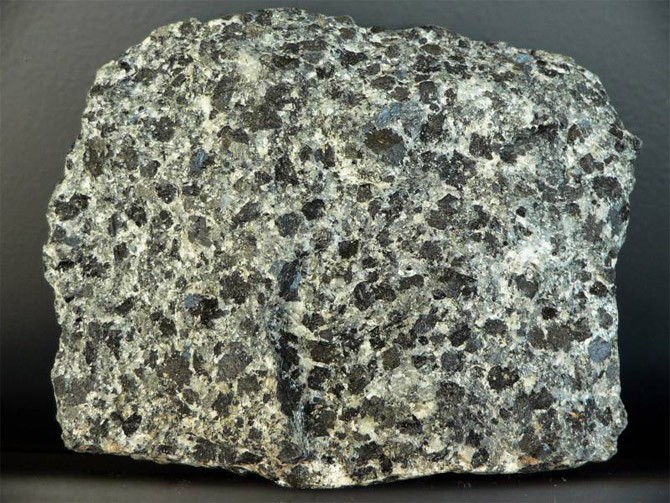
In this place, mixing of basalt and granite occurs, during the crystallization of this mixture, diorite is formed. Diorite and granite are part of a group of rocks called granitoids. But diorite contains less quartz than granite, its content never exceeds 20%. If there is more quartz, then it is no longer diorite, but granodiorite. When a volcano erupts diorite lava, it turns into andesine.
Deposits and production
The main deposits of this stone are located in America. The deposits are located both in the South and in the North of the mainland, namely:
- Cordillera;
- Chile;
- Peru;
- Ecuador.
It is also widely distributed in:
- Great Britain;
- Kazakhstan;
- in the Urals;
- North Caucasus;
- Kabardino-Balkaria;
- Northern Europe.
Diorite is very actively mined in Sweden and Norway. In Kazakhstan, there are a couple of fairly large deposits of this rock - Uvalnenskoye (Kostanay region) and Kapchagai (Alma-Ata region). In Ukraine, there are also deposits of diorite. They are located in the Carpathians, where they are in the form of stocks (vertical bodies similar to pillars).
Physicochemical characteristics
Diorite belongs to the nominal alkalinity series, as it contains an average amount of silicon oxide. It contains andesite (or oligoclase-andesine) and colored minerals. The most common impurity is hornblende, less often pyroxene.
| Property | Description |
|---|---|
| Specific weight | 2,7 - 2,9 |
| Compressive strength | 150-280 MPa |
| separateness | Reservoir or parallelipidal. |
| Texture | massive |
| Structure | Full crystalline, evenly crystalline, fine to giant grained |
| Color | Dark green or brown green |
Average chemical composition:
- SiO2 53-58%,
- TIO2 0.3-1.5%,
- Al2O3 14-20%,
- Fe2O3 1.5-5%,
- FeO 3-6%,
- MgO 0.8-6%,
- CaO 4-9%,
- Na2O 2-6.5%,
- К2About 0.3-2%.
Diorites have a massive texture. It can have either a uniform or full-crystalline structure (fine-grained or coarse-grained).

The stone can be called slightly brittle, as it has a high viscosity. Diorite resists shock loads very well. As a facing material, it is quite resistant to the negative effects of the environment on it. The rock has a high resistance to weathering.
Stone types
Diorite can be categorized by composition and by color. In the first case, the breed is divided into several varieties:
- Quartz (according to the presence of quartz in the composition of the stone);
- Non-quartz (according to the presence of quartz in the composition of the stone);
- Hornblende;
- mica;
- augite;
- orthopyroxene (by mineral composition);
- Clinopyroxene (by mineral composition);
- Two-pyroxene (by mineral composition).
The following categories are distinguished by color:
- Brown-greenish;
- brown-green;
- Dark emerald;
- smoky;
- Gray;
- Ashy.
Scope of the mineral
Diorite is excellent for use in construction, because it is very hard to damage a whole huge piece, perhaps only if you use a diamond. It is due to these properties that it is very popular, and it is also very similar to granite, which gives it uniqueness and beauty.

From the very beginning, even before our era, this stone was used to create sculptures, instead of granite, which is many times more fragile than diorite. For example: in ancient Egypt, people made a huge number of sculptures, some of which have survived to this day.
It still remains a mystery how they could process this type of stone, since it is difficult and overwhelming work, which is why they have now come up with the diamond “Cutting” method, which greatly simplifies this type of activity. Interestingly, the most ancient sculptures were found in Mesopotamia.
Some varieties of rock are used as a facing material for buildings, or for interior decoration, such as fireplaces. Such varieties are those diorites that have a fairly rich shade and are perfectly polished.
REFERENCE! Quite often you can find various household items, such as floor lamps, vases or countertops, which are made from this stone.
Much less often, diorite is used as a material for laying floors or facing stairs. Usually, various types of road stone are made from this breed, which are used for the design of personal plots. Most often it is crushed stone, as well as block stone, in more rare cases, chips. In such stones, grains of weak rocks should be no more than five percent.
Diorite also has its downsides, such as not polishing very well and instead creating a greasy sheen on itself, much like granite or marble.
Diorite has the ability to absorb lacquer, so this stone is divided into cabochons, and is also used as a precious stone. For example, in Australia, a beautiful diorite, which had amazing pink blotches, was cut into cabochons and given the name “pink marshmallow”.
Interesting about the stone
- To date, more than four thousand different types of stones have been studied, among which is diorite.
- Minerals exist in both gaseous and liquid states. If the stone is melted or subjected to evaporation, it will remain a mineral.
- Diorite is sold under the guise of granite, as sellers of natural stones use this name for all rocks that have feldspar in their composition.
- Diorite is also sold as "white granite", which is used in construction.
- It has high strength, its impact resistance is close to that of diamond.
- This type of stone is very strong, reliable and durable, surpassing even granite in these qualities.
- By age, diorite is a very ancient stone, it has more than 50 million years.
- The composition of the stone includes feldspar, because of which it has a greenish tint.
- It is not only strong, but also has toughness, it is this property that gives it excellent wear resistance.
- Diorite has a springy effect that prevents it from breaking apart.
- In terms of compressive strength, it reaches two hundred and eighty Mega Pascals.
- In ancient times it was used as paper. For example, on a block of this stone, the set of Hammurabi was carved - one of the first collections of laws in the history of mankind.
Conclusion
Thus, this little-known type of stone is very similar to granite in many characteristics and indicators. It is quite unique, you just need to remember how it is formed and from what. Used in construction since ancient times, today it is also used as a precious stone.
This type of stone is very durable and unique. But its quantity is limited, since natural stone is very difficult to extract, they began to replace it with artificial counterparts. This is such an unusual and amazing stone.
